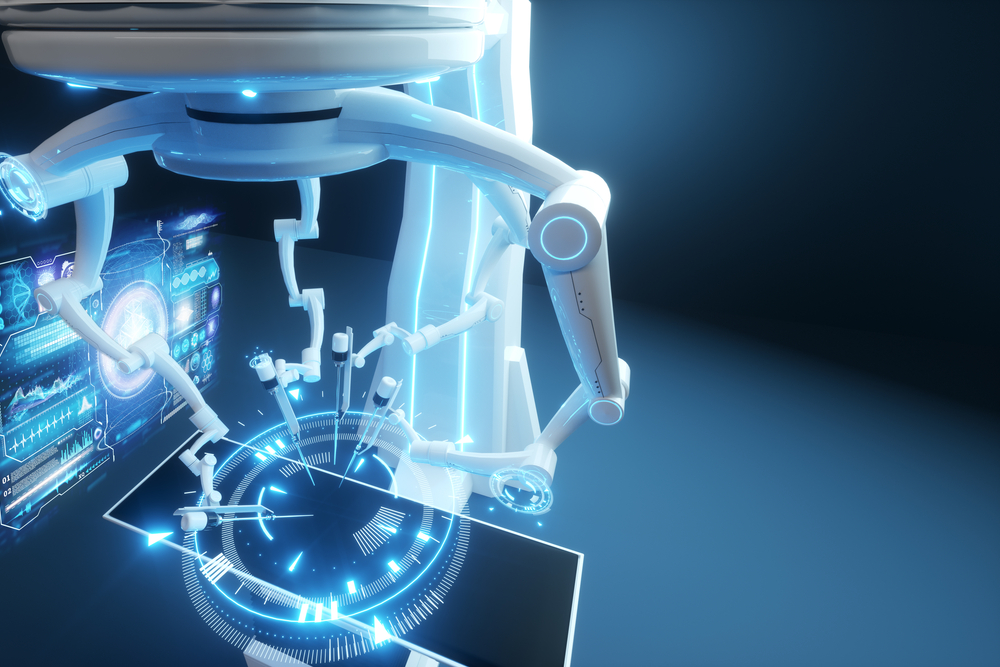As robots become more common in operating rooms everywhere, doctors and patients will enjoy the numerous benefits this innovative surgical equipment provides. With the help of surgical robotics, medical professionals can complete some of the most complex procedures seamlessly. This blog looks at the importance of surgical robotics, the types of motors they use, and how Telco is the answer.
How Surgical Robots are Innovating Procedures
Currently, it is common to see robots working in a wide range of industries across the globe. However, in the medical field, there have been some tremendous changes going on as surgical robotics become more the norm in many operating rooms. Robots are getting promoted, moving from highly repetitive tasks such as surgical automation into more complex fields of medicine with massive success.
As surgical robotics has become more advanced, surgeons can seamlessly tackle some of the most challenging procedures, from spinal injuries to neurological surgeries, with great ease. For example, a surgical robot could use 3D surgical planning and intra-op guidance in spinal surgery, making an almost impossible process incredibly easy.
How Surgical Robotics Work
As time passes, surgeries are being completed much quicker and becoming much less invasive for patients. Patients find that their recovery time is much faster with limited amounts of pain post-surgery. These changes are all thanks to surgical robots, rapidly modernizing medical practices everywhere, such as using AGV technology in nursing homes.
This cutting-edge surgical robotics can now save surgeons and patients more time while ensuring that many procedures are far less stressful. Many healthcare professionals are flocking to get their hands on one of these units to ensure surgeries can be minimally invasive.
As procedures become less invasive, this will result in significant cost-savings for the medical industry regarding pre-op and postoperative care, meaning patients can be home in their beds much sooner. Thanks to medical device robotics, these changes now help free up more hospital beds, allowing someone else to receive their procedure sooner – and the cycle continues.
Types of Motors for Surgical Robotics
In this stage, you must think about which motors for surgical robots to use. Below are the different types of motors for surgical robotics and a brief description of their advantages.
Stepper Motors
Stepper motors are widely used in robotics applications as they have numerous built-in advantages. These motors are compatible with feedback signals, both analog and digital. The stepper motors don’t experience cumulative errors. They share the last position within a tiny percentage of one step.
Brushless DC Motors (BLDC)
Brushless DC motors (BLDC) use a high-performance design, perfect for applications requiring quick acceleration and precise positioning. BLDCs are highly efficient, compact structures. They are known for being popular in the medicine, military, and automation sectors due to their reputation for being reliable.
Brushed Permanent Magnet DC Motors (PMDC)
Brushed permanent magnet DC motors (PMDC) are highly affordable but also known for their durability. PMDCs are in high demand when there is a need for a reliable and powerful motor, making this motor a top choice in the medical industry for motors for surgical robots.
DC Brush Motors
DC brush motors are standard for applications that require a balance between speed and torque, making DC brush motors a favorite due to their ability for direction rotation. Most DC brush motors can operate over a speed variation of 8:1 continuously, with an option for an infinite range done for only brief periods.
Selecting the Right Motor for Surgical Robotic Applications
Here is a list of five key points to remember when considering what motor to go with for that next robotic surgery.
-
System Structure
It is critical to understand what is necessary when it comes to controlling methods, specifications about feedback, and the types of mechanical characteristics of the robot. For example, if the surgical robot must hold specific poses for extended periods, it is wise to have fail-safe power-off brakes as a safety precaution.
-
Motor Type
The most critical aspects for any frameless motor kit are ensuring a mechanical form factor, motor constant (Km), and torque versus speed characteristics when handling operating procedures under specific power limits. For example, there is no industry standard for motor form factor that deals with diameter, length, and through-hole size. In this case, it is wise to contact experts and do your research before buying.
-
Integrating the Motor
It is vital to remember that integrating a frameless motor kit into a mechanical joint is complicated, involving different elements like mechanics, dynamics, rotation, and thermal factors. For example, it is wise to reduce the amount of bearings, couplings, and shared rotating shafts; this will increase reliability and reduce the number of components.
-
Concerning Temperature and Thermal Limits
Typically, most motors will be sized and designed to perform under the most demanding conditions, making them highly durable. By knowing the thermal limits, medical professionals can easily predict and prepare for the heat required when mounting a robotic joint, as each segment must be highly accurate and engineered.
-
Types of Solutions
It is essential to consider the health of your patients, and when investing in surgical robotics, it is a good idea to check the reputation and background of the supplying company. Whether looking for a specially designed unit, or a product that is off the shelf, it is essential to be clear on your priorities.
Telco Has Got You Covered
Whether you’re looking to seriously start investing in some cutting-edge surgical robot motors or maybe just starting to do some research, at Telco, we help! With over 30 years of experience, our knowledgeable team can point you in the right direction or answer any questions. Get in touch with us today to learn more!
